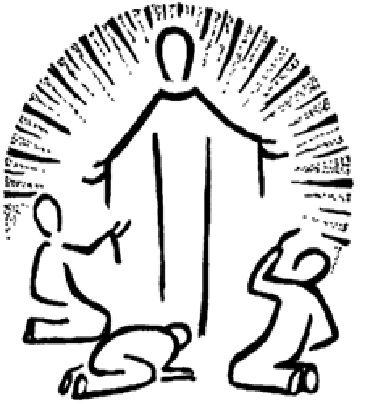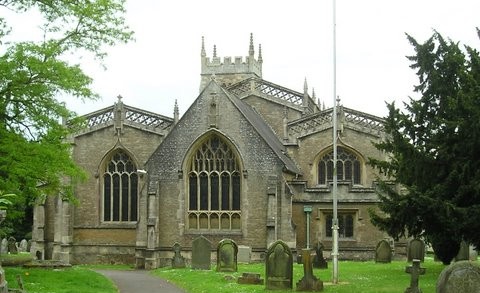Transfiguration – 6th August 2023
Daniel 7:9-10, 13-14 and Luke 9:28-36
In the name of the living God, Creator, Redeemer and Sustainer, Amen.

The book of Daniel is an interesting read – there is the story of Daniel during the exile and the challenges he faced, including the writing on the wall, the lion’s den and the fiery furnace, and then a sequence of dreams and visions – which is where our Old Testament reading came from today. As a book there are lots of theories about it’s origin and dates. It is about a passage of time which happened significantly before it was written, and contains apocalyptic stuff – which is a way of writing we don’t often indulge in (foretelling the future and picture language with lots of hidden meanings that the people would have understood differently at the time). In all of this we can’t be very certain about all the meanings but some of the editing may well be in the same time frame as some of the books of the New Testament. Frankly Biblical scholars disagree about this!!
Our extract was part of one of Daniel’s dream visions. The bit we got is a judgement scene – including one seated on the divine throne (which we interpret as God the Father and creator) and the appearing of a second heavenly figure (which we interpret as God the Son, the redeemer – Jesus Christ, given an everlasting dominion over the earth and his people. (This vision has parallels with other visions in Ezekiel and Revelation). The original language is very poetic in nature, with metaphors and similes and linking in to other ancient traditions. All and all it is complicated, has many layers to it.
It is rather graphic too in what Daniel dreamed! I just want to pull out a couple of aspects of the vision Daniel had of God. The first of these are that he was surrounded by fire, his throne was fiery flames and its wheels were burning fire. A stream of fire issued and flowed out from his presence.
Fire, rather naively, can be seen as entirely positive, to provide us with light, protection and guidance. But a wider view of fire is that it is something transcendent, absolute, and dangerous, mysterious and destructive. The difference between a flickering candle flame and the recent wild fires on Rhodes. God’s appearing is often described as from a violent storm, whose lightening flashes fire of heaven (Exodus and Deuteronomy) or within the brightness of the sun in Ezekiel. The presence of all this fire points to the otherness of God, which is beyond us. It gives us a sense of terrifying power – omnipotence, all powerful and almighty – which is not an inappropriate way to understand the wonder of God.
The second thought is about describing God’s clothing as white like snow and the link to our Gospel reading when Jesus became dazzling white too on the mount of transfiguration with Peter and James and John looking on.
This is a definite pointer to the fully human and fully divine side of Jesus – showing his divinity in a new way. A way we can’t really explain or rationalise. I am sure for Peter, James and John this was a ‘you had to be there’ moment. These are times that we simply cannot adequately describe to someone else (often trying to describe something that you found hilariously funny at the time but afterwards it is hard to explain why).
Peter has the misfortune of babbling in the face of such wonder when Moses and Elijah also appeared to complete the scene. We understand this because sometimes we don’t have the words either to really capture what is unfolding before us and the wonder of God with us. For some accepting this mysterious and wondrous side of God is particularly challenging as it defies logic and scientific scrutiny. I think we really limit ourselves if we limit our thinking to entirely what can be proved (and I do have a scientific background too!).
There are moments when we have to understand things beyond our linear reason – like where the part of the vision of Daniel we got today ends. That to Jesus was given dominion, and ever lasting dominion, that shall not pass away.
We may not this side of heaven’s divide understand exactly how all of that works or fits together, but at many levels we don’t need to understand it, we need to live informed by it and the wonder of an all powerful God who loved us so much that he send Jesus to save us in the way that God did.
I want to end with a story which challenges us to understand how God is with us, sometimes dazzling us as happened in Daniel’s vision or to Jesus on the mount of transfiguration and beyond us.
Dr. Paul Pearsall and his wife were attending a meeting in Rome, Italy. Their first stop was a tour of Vatican City. Michelangelo’s work in the Sistine Chapel had just been renovated. Dr. Pearsall and his wife waited for hours in line for a glimpse of this remarkable feat. At a distance the paintings did not look all that impressive. People chattered and joked about a paint-by-number replica of Michelangelo’s work for their own ceilings. When they drew closer, however, they were overwhelmed. The paintings seemed to engulf them. Everyone became quiet. Necks ached with the effort to keep looking up. Now they were seeing the paintings as Michelangelo intended for them to be seen. The impact was unforgettable.
Then Dr. Pearsall noticed a fly crawling across the paintings. He thought, ‘What a shame. That fly is right up there where I would love to be. He’s right on top of it… but he just can’t see it.’ Then Dr. Pearsall remembered reading the words of philosopher William Irwin Thompson:
‘We are like flies crawling across the ceiling of the Sistine Chapel. We cannot see what angels and gods lie underneath the threshold of our perceptions… ‘
Amen
(‘Flies on the ceiling of the Sistine Chapel’, in Paul Pearsall, Making Miracles, Simon & Schuster, 1992, ISBN 0130893501). Story reproduced from rootsontheweb.com © with permission and other material, The revised standard version of the Bible (1989, 1995 ©) – The word Biblical Commentary on the book of Daniel.
